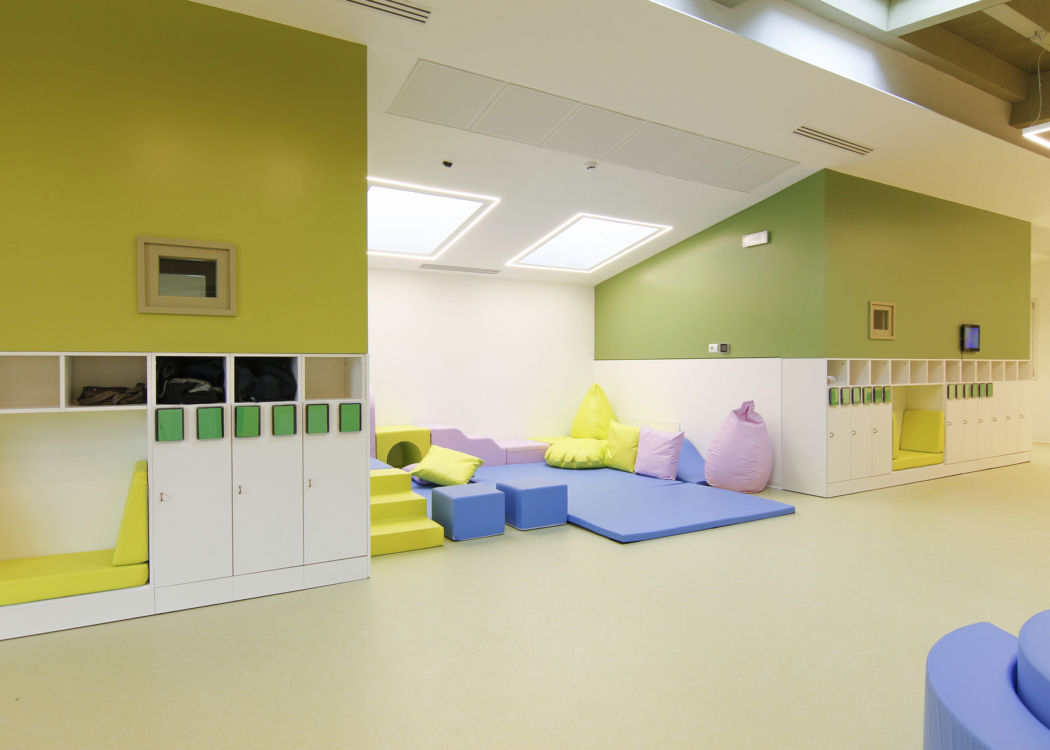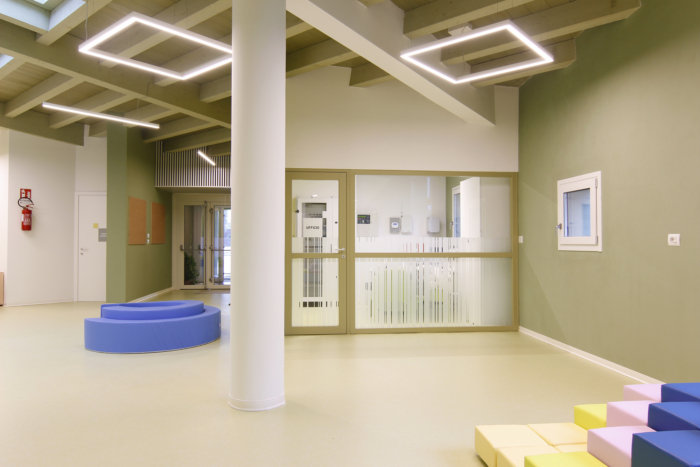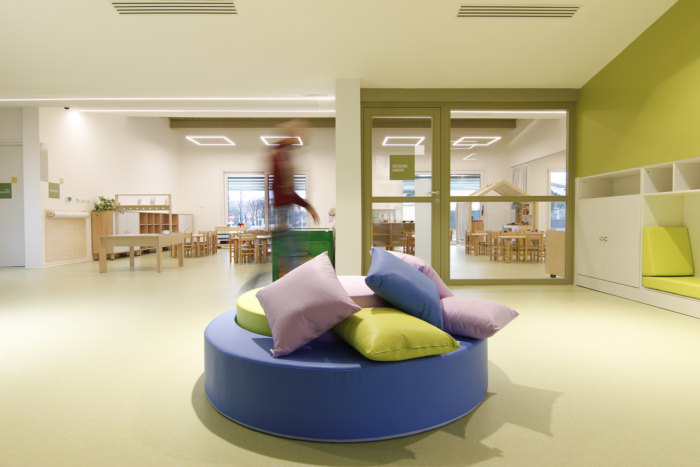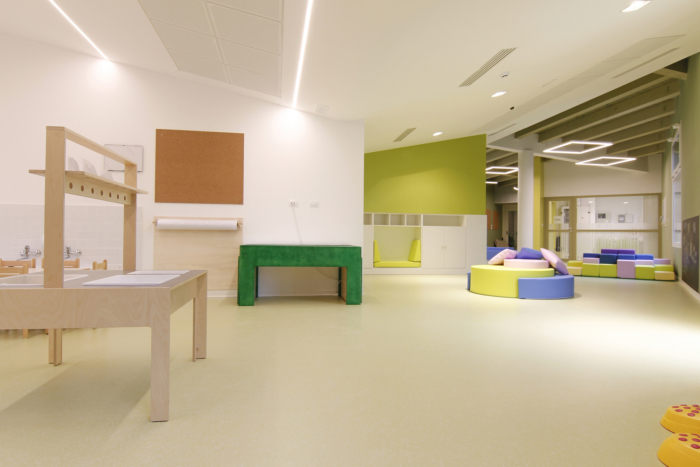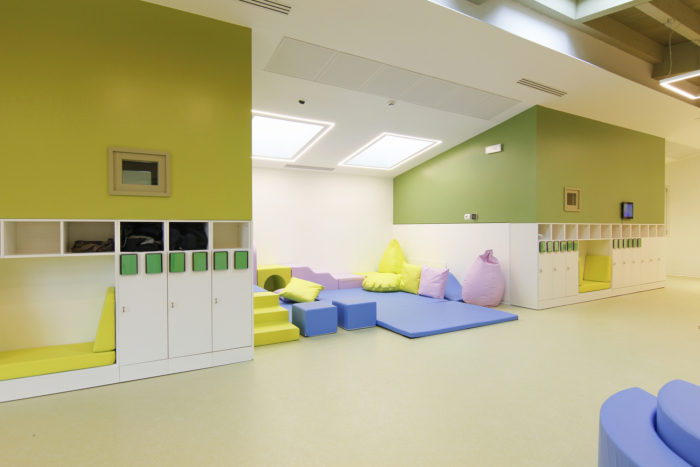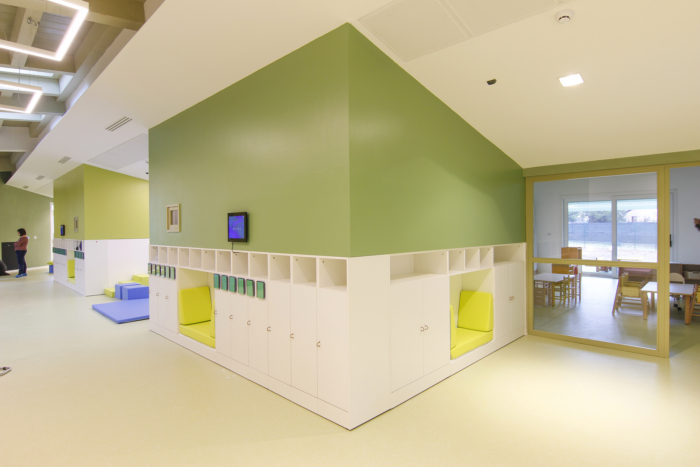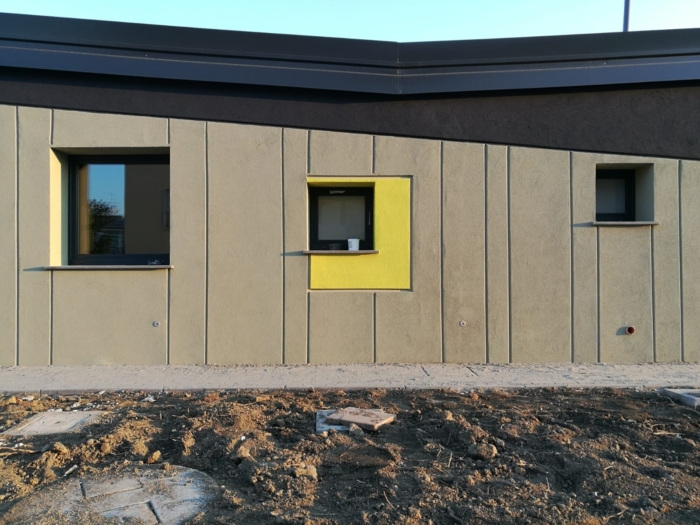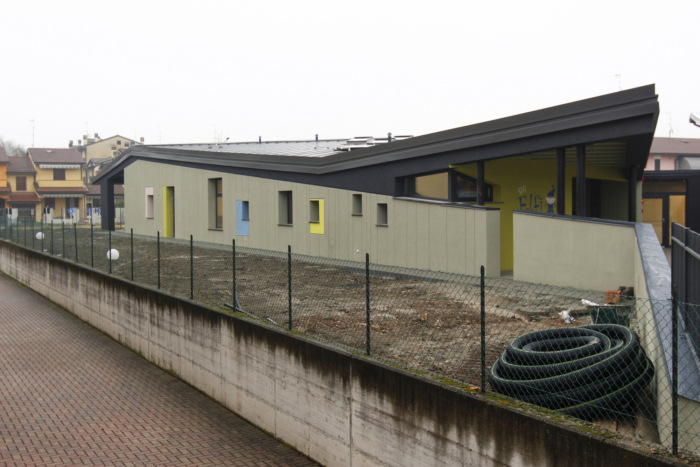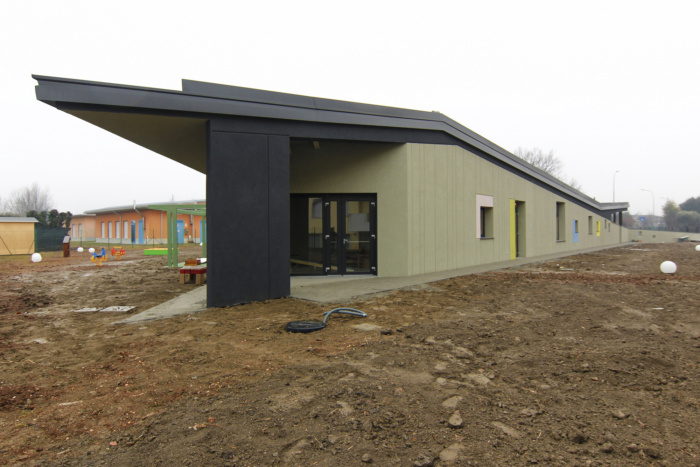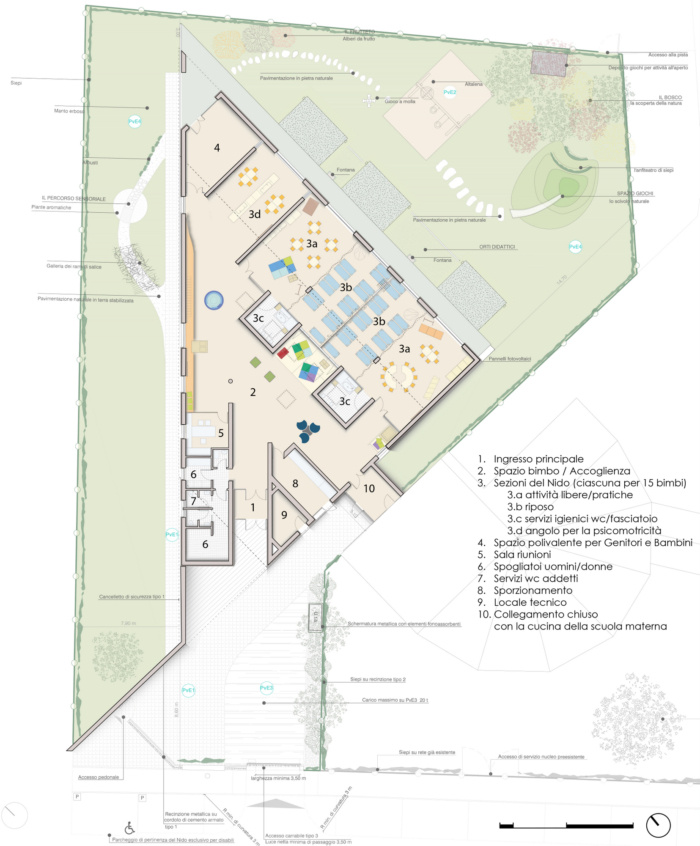Kindergarten “Gli Elfi”
CCDSTUDIO have designed the new space for Kindergarten “Gli Elfi” located in Bologna, Italy.
The intervention stems from the need to equip the current nursery school of the Municipality of Roverbella with an artifact, replacing the ancient already present in the vicinity, dedicated to the hospitality and care of early childhood, for the range from 0 to 3 years.
The Asilo Nido “Gli Elfi” is therefore the result of a project financing proposal, put forward by the Social Cooperative Società Dolce to the municipal administration in response to this need. The proposal has tried, in the economic balance sheet of the parties, to organize the spaces for a Nest that correspond to a capacity of at least 2 sections, commensurate in turn to be suitable to accommodate 30 children.
The area identified for the new building is inserted within the large green portion on the western edge of the existing kindergarten, in a free area, bounded on the lower part by an internal road to the block – Via Don Bazzotti, from where the main entrances take place – and in the upper part by a rectangular sector within which a mini track has recently been built for the road safety education of children. The project falls within an articulated perimeter in the form of an elongated trapezoid in which the new building must mediate the relationship between the surrounding greenery and the canteen / kitchen building to which the addition was necessarily connected.
The composition was based on a triangular-shaped figure, 45.2x32x32 meters, whose base is oriented along the parallel axis to the perimeter margin, orthogonal to the Via Bazzotti, and the short sides, which close at right angles , are inclined at 45 ° to follow the existing layout of the existing kitchen volume from the secant plane. The geometric description defines the ideal figure within which the protected external areas and all the interior spaces of the Nido have been organized, sized according to the regulations. The quantification of the surface has been programmed on the basis of a number of 2 sections for a maximum of 15 users each, for a total number of 30 children. In this configuration, the functional layout is oriented with a low vertex to the west, aimed at establishing the entrance opening on the access road, and a high-east vertex closing the eastern front towards which both sections open.
Leaving behind the street approaching the area and passing the short entrance conduit, the space passes from the linearity of the initial distribution to a scope that extends its spatial and functional expansion, following a second rotated direction of 45 °, to establish the suitable environment to accommodate the centrality of the functions of the nest. In fact, while in the segments that flank the entrance are contained all the rooms reserved for employees, used for the preparation and organization of educational activities as well as for meetings and technical management of plant machinery, the central part, oriented towards ‘H of the basic triangular figure, welcomes the child space more dedicated to the knowledge and group sharing of the activities reserved for them. From this environment we move directly to the most intimate and specific spaces of the two sections in which children carry out most of their life inside the nest and in which different moments alternate during the day, from sleep to meal, from activities of ordered play to the more free psychomotor ones.
The section space, although organized to have an independence between the moments linked to the activities and the phase dedicated to rest, was conceived to allow flexibility and contiguity between the environments. In order to make the use of the spaces easier, both for the children and for the educators, called to organize and monitor the spaces during the alternation of the scheduled daily phases, the sections have been coupled in a mirror-like way by contacting the two zones dedicated to rest through a mobile partition that can materially determine two separate isolated rooms, or otherwise a single dormitory in cases that foresee or need it. The potential of this area between the two sections, with the intention of the project being modified during the course of the work, tried to be grasped as much as possible also to allow the total opening of the two sleeping areas and, consequently, of the corresponding sections, towards the central space of the ateliers, transforming the central area into a single large room for parties and meetings.
Designer: CCDSTUDIO
Design Team: Luca Ciaffoni, Michele Ciutti, Antonio Di Marcontonio, Gabriele D’Angelantonio, Matteo Di Crescenzo, Chiara Pannella, Nicole Balassone
Photography: Gabriele D’Angelantonio

